Federal Court Tosses North Carolina Congressional Districts For Second Time
For the second time this year, a three-judge panel of Federal Judges has struck down North Carolina's Congressional District map. The immediate question is what impact, if any, this will have on November's election.
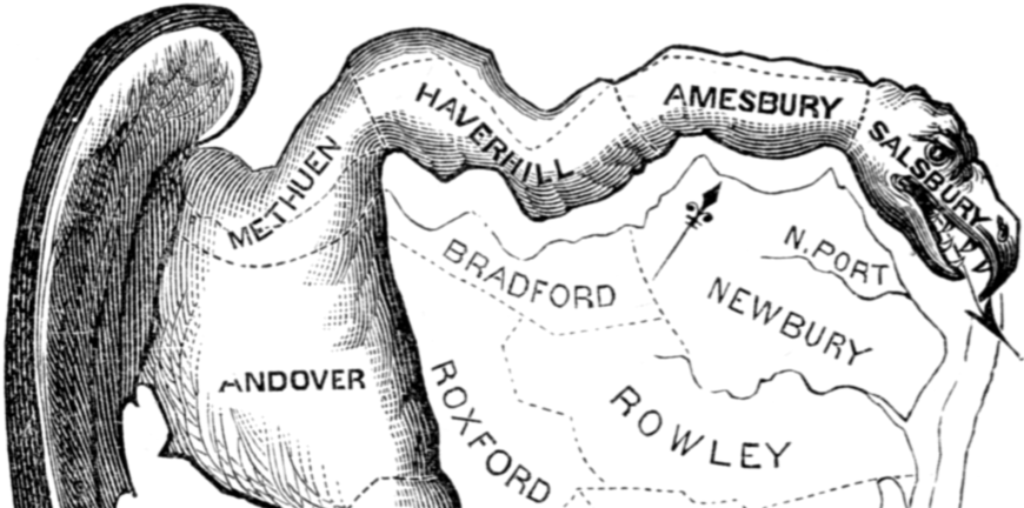
For the second time this year, a three-judge panel of Federal District Court Judges in North Carolina has thrown out the Tarheel State’s Congressional District map on the ground that it unfairly favors Republicans over Democrats:
A panel of three federal judges again declared North Carolina’s congressional district map to be unconstitutional, ruling on Monday that it was gerrymandered to unfairly favor Republican candidates.
The decision, which may have significant implications for control of Congress after the midterm elections, is likely to be appealed to the United States Supreme Court, which for the moment is evenly split on ideological lines without a ninth justice to tip the balance.
Though North Carolina’s voters tend to divide about evenly between the two parties, Republicans currently hold 10 of the state’s 13 House seats. A redrawn district map may put more of the seats within Democrats’ reach.
The three judges had ruled unanimously in January that the state’s House map violated the First and 14th Amendments by unfairly giving one group of voters — Republicans — a bigger voice than others in choosing representatives.
But the Supreme Court declined in June to hear an appeal in the case, sending it back for reconsideration under guidelines it had set out in a different case about who had legal standing to challenge the map.
In a lengthy ruling on Monday, the panel reached largely the same conclusion that it had in January. And the judges agreed that the plaintiffs in the case — voting-rights advocacy groups and residents of each of North Carolina’s 13 districts — had standing to bring the suit.
The judges left open the possibility that they could order new maps to be drawn before the 2018 election, either by the North Carolina General Assembly or by a special master appointed by the court.
The ruling sets up a delicate tactical question for the Supreme Court, which has never ruled a partisan gerrymander to be unconstitutional, passing up three separate opportunities to do so in its last term. With the retirement of Justice Anthony M. Kennedy at the end of July, the court is now divided between four conservatives who have expressed skepticism about the court’s ability to tinker with political maps, and four more liberal justices who have argued that it has that ability.
A 4-to-4 vote would leave the lower court’s ruling intact.
The swing vote on the issue would probably be Chief Justice John G. Roberts Jr., whom many voting-rights advocates see as the only prospect on the court — and a slim one, at that — for a fifth vote to outlaw partisan gerrymanders.
Of the welter of cases on the issue that have moved through the federal courts in recent years, the North Carolina case is perhaps the starkest. The state’s Republican-dominated legislature redrew the House map in 2016 under orders from a different federal court, which had ruled that some districts drawn in 2011 were racially gerrymandered, a practice the Supreme Court has already ruled unconstitutional.
The 2011 map had turned a 7-to-6 Democratic edge in the state’s House delegation to a 9-to-4 Republican one. The redrawn map in 2016 — the one at issue now — produced a 10-to-3 ratio, but the legislature explicitly said that it had been drawn not to disadvantage minority groups, but to hurt Democrats.
“I propose that we draw the maps to give a partisan advantage to 10 Republicans and three Democrats, because I do not believe it’s possible to draw a map with 11 Republicans and two Democrats,” David R. Lewis, a North Carolina state representative who helped lead the remapping, said in 2016.
The three-judge panel ruled in January, though, that the change in motive did not make the map acceptable. It found that the legislature’s intent was “to ‘subordinate’ the interests of non-Republican voters and ‘entrench’ Republican domination of the state’s congressional delegation,” a view they reaffirmed on Monday.
The chief author of the panel’s latest opinion, Judge James J. Wynn of the United States Court of Appeals for the Fourth Circuit, said the legislature’s “invidious partisanship runs contrary to the Constitution’s vesting of the power to elect representatives in ‘the people.'”
The three judges left open, for the moment, what would happen next. They gave the parties in the case until the end of this month to file briefs on whether the court should allow the existing map to be used one more time, in the midterm election, or should order that it be redrawn by mid-September.
With the election less than three months distant, Judge Wynn noted, a court normally would allow one more use of the old map, so as not to disrupt election preparations, especially since North Carolina has already held primaries for the races.
Election law expert Rick Hasen comments:
The result in this case is not a surprise, given where this panel was before the Supreme Court sent this case back and given that North Carolina’s gerrymandering was one of the most brazen in the nation, where state legislative leaders proudly pronounced it a partisan gerrymander (to negate an argument that it was a racial gerrymander). As I’ve written, if what North Carolina did goes, then the next round of redistricting will be an anything goes round of redistricting across the country. We will see the most egregious partisan gerrymanders imaginable.
So the court decision is not a surprise in this regard, but it is surprising on the timing. The court has opened the possibility of giving the state the chance to draw new maps, or maybe appointing a special master, all in line with the idea of replacing the districts with cured districts in time for the 2018 elections, where primaries have already been held
Given the closeness of the election, this is somewhat surprising. We know that the Supreme Court has not liked interim remedies in redistricting and election cases close to the election, and it has often rolled back such changes, Indeed, I expect legislative leaders are on the phone with Paul Clement now planning to go to the Supreme Court to ask for an emergency stay of this order. (Think it is too early? Read Abbott v. Perez from last term.)
But this time there’s a difference at SCOTUS: with Justice Kennedy’s retirement, we have a 4-4 Court. A few weeks ago, I thought of writing a piece for Slate arguing that now would be the perfect time for the three-judge court to act in this case, because the Court is divided 4-4 and in that case the lower court ruling would stand. But given that primaries are done, and ballots needing to be printed very soon, I thought it would be too late for a lower court to try it.
And it could be that if Clement goes to SCOTUS, Justices Breyer and Kagan could agree that it is too late and agree on an order to delay this until the Court can consider the issue as a whole next term and before the 2020 elections. So the key to this is Breyer and Kagan, I think, and I’m not sure how they will go.
In the longer term, the Court will be likely to take this case, because it is an appeal finding a partisan gerrymander, and the four conservative Justices won’t let that stand, and they’ll soon by joined by Judge Kavanaugh to likely hold partisan gerrymanders completely non-justiciable (as they were going to do in Gill if they had Kennedy’s vote).
But if the lower court orders new districts for 2018, and the Supreme Court deadlocks 4-4 on an emergency request to overturn that order, we could have new districts for 2018 only, and that could help Democrats retake control of the U.S. House.
As with the ruling back in January, the Judges in this case based a large part of their opinion on the abundant evidence that the North Carolina legislature was primarily motivated by partisan concerns at the time that it drew the lines for the map that North Carolina is currently using to define its Congressional Districts. Specifically, the legislative record of the debate that took place during that process are filled with comments from Republican legislators openly admitting during the course of debate at the committee level and on the floor the respective chambers of the legislature that the lines had been drawn with the primary concern being how they would benefit the Republican Party and how much of a partisan gerrymander they could conceivably get away with. In this respect, the North Carolina case differs significantly from the cases arising out of Wisconsin and Maryland that the Supreme Court dealt with in opinions handed down earlier this year. In those cases, the Plaintiffs were essentially relying on the effect of the decisions of the respective legislatures 0n the partisan balance of the Congressional Districts in the respective states, In this case, we have clear-cut evidence in the form of the statements of state legislators that they were drawing a map that was as favorable for Republicans as they could possibly get away with. The cases from Wisconsin and Maryland, of course, were punted by the Supreme Court on procedural grounds earlier this year A few weeks later, the Justices declined to hear the appeal of the panel’s January decision and instead remanded the case for further proceedings. This case is the result of those proceedings.
As with the January decision, the next step for this case would be a direct appeal to the Supreme Court, but before we get to the merits of the case there is the issue of whether or not the legislature will be required to redraw the Congressional map prior to the 2018 midterm elections. The panel recognizes this issue in its decision and, for the moment at least, that issue remains up in the air. In the decision, the panel raises a number of possibilities ranging from allowing the current map to be used for one final election to requiring the legislature to withdraw the map as it exists now and replace it with a map that meets the conditions that the Court has set in its decision. The problem with that second option, of course, is the fact that there are, as of today, just 71 days until the midterm elections and the state has already held primary elections based on the existing map. Drawing new district lines would require a new set of primaries and then Special Elections in each of the state’s Congressional Districts, most likely sometime in December so that new Members of Congress could be ready to serve when the new Congress convenes in January.
As Jazz Shaw notes at Hot Air, this raises some significant questions:
The state’s primary elections were held in May, before the Supreme Court even spoke on the matter, using the current map. The voters evaluated the various candidates and cast their ballots based on that map. The candidates campaigned inside those district lines.
Now you’re going to consider turning around and redrawing the lines? People are going to wind up voting in elections where they had no voice in the primary. Candidates will be judged by people who never had the chance to look them over throughout the year. Can they even get the ballots printed up and distributed in time once the new map is finished? They were already supposed to be done by now but were put on hold pending the decision.
I’m not sure the judges realize what sort of a can of worms they’re threatening to break open here. The state legislators have been arguing over this map for two years now. Do the judges honestly believe that they’re going to crank out a new, acceptable one in the next seventeen days?
The answer to that question, it seems to me, lies in a 2006 decision from the Supreme Court called Purcell v. Gonzalez. That case dealt with a Voter ID law out of Arizona which opponents argued unfairly discriminated against minorities. The Ninth Circuit Court of Appeals had issued an injunction barring the state from enforcing the provisions of the law in that year’s midterm elections notwithstanding the fact that the injunction was issued in September 2006 and the state had already moved forward with election planning, including the printing of absentee ballots, that presumed the new law would be in effect for that election. In a relatively short opinion, a unanimous Court ruled that the Court of Appeals had erred in not giving greater consideration to allowing the law to go into effect just weeks before the election:
Faced with an application to enjoin operation of voter identification procedures just weeks before an election, the Court of Appeals was required to weigh, in addition to the harms attendant upon issuance or nonissuance of an injunction, considerations specific to election cases and its own institutional procedures. Court orders affecting elections, especially conflicting orders, can themselves result in voter confusion and consequent incentive to remain away from the polls. As an election draws closer, that risk will increase. So the Court of Appeals may have deemed this consideration to be grounds for prompt action. Furthermore, it might have given some weight to the possibility that the nonprevailing parties would want to seek en banc review. In the Ninth Circuit that procedure, involving voting by all active judges and an en banc hearing by a court of 15, can consume further valuable time. These considerations, however, cannot be controlling here. It was still necessary, as a procedural matter, for the Court of Appeals to give deference to the discretion of the District Court. We find no indication that it did so, and we conclude this was error.
Although at the time the Court of Appeals issued its order the District Court had not yet made factual findings to which the Court of Appeals owed deference, see Fed. Rule Civ. Proc. 52(a), by failing to provide any factual findings or indeed any reasoning of its own the Court of Appeals left this Court in the position of evaluating the Court of Appeals’ bare order in light of the District Court’s ultimate findings. There has been no explanation given by the Court of Appeals showing the ruling and findings of the District Court to be incorrect. In view of the impending election, the necessity for clear guidance to the State of Arizona, and our conclusion regarding the Court of Appeals’ issuance of the order we vacate the order of the Court of Appeals.
In a concurring opinion, Justice John Paul Stevens noted that leaving the stay of the lower court’s ruling against the law in effect in advance of the impending election would be the best way for future courts to deal with the legal issues involved in the case.
Allowing the election to proceed without enjoining the statutory provisions at issue will provide the courts with a better record on which to judge their constitutionality. At least two important factual issues remain largely unresolved: the scope of the disenfranchisement that the novel identification requirements will produce, and the prevalence and character of the fraudulent practices that allegedly justify those requirements. Given the importance of the constitutional issues, the Court wisely takes action that will enhance the likelihood that they will be resolved correctly on the basis of historical facts rather than speculation.
In Purcell, the Ninth Circuit opinion vacating the stay against the lower court ruling was issued on September 11th, and the Supreme Court’s ruling on the appeal of that denial was issued on October 20th. While both of these dates were closer to the date of the 2006 midterms than we are right now, it seems to me that the Purcell ruling should be controlling here and that the District Court and, if necessary, the Supreme Court, should be just as circumspect in ruling on a remedy that addresses the panel’s underlying ruling in this case. Even assuming that the panel’s ruling is correct on the facts and the law, requiring the legislature to redraw the maps at this point in the election cycle would be highly disruptive to electoral process and potentially unfair both to candidates who have been campaigning in reliance on the fact that the current map is the one that will be in effect on Election Day and on voters who are likely already confused about which race they are going to be asked to vote on when the election comes. Additionally, we’re already at the point where election officials are being required to prepare and mail absentee and military ballots and the time when early voting is supposed to begin. Given the large number of military bases in North Carolina, the military ballot issue is a particularly relevant one since Federal law requires those ballots to be mailed within a specific amount of time prior to Election Day. There are similar deadlines in the law regarding the printing and mailing of absentee ballots and the printing of the ballot for early voting. The odds that the issues regarding the Congressional map can be resolved before these deadlines are, to be frank about it, quite low. Given all that it seems quite clear that the only fair and equitable solution at this point would be to keep the current map in place for one more election while the legislature redraws the map and/or the state appeals this matter to the Supreme Court.
Here’s the opinion:
Common Cause Et Al v. Rucho Et Al by Doug Mataconis on Scribd

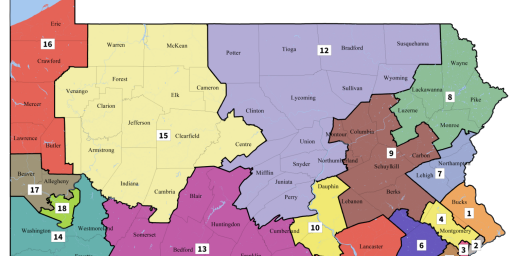
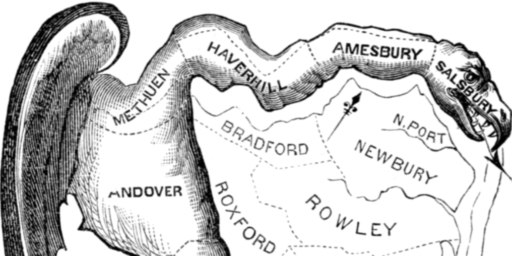
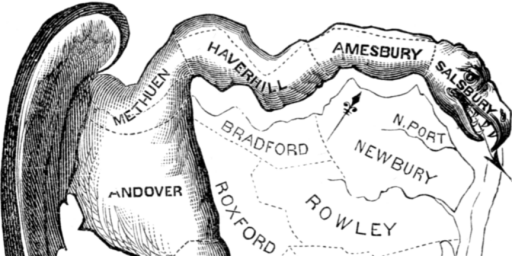
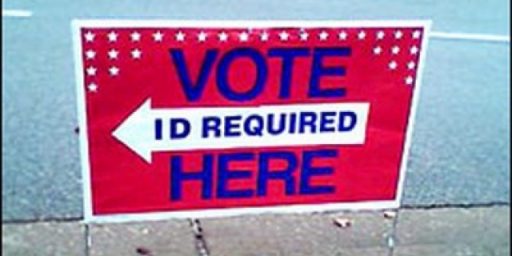
The Republican position seems to be, “We stole it fair and square!” This is closely related to the Trump version, “But I committed those crimes years ago, unfair charging me!”
Neither of these notions impress law enforcement types, and they don’t impress me. The NC legislature knew perfectly well that what they were doing was unfairly rigging an election, they should not be allowed to profit from their bad deeds.
There are computer programs that could be used to draw fair districts in ten minutes. Figuring out what to do about the candidates is harder, but hey, a legislature this creative at stealing elections should have the wherewithal to manage.
What is the remedy for legislators being elected from unconstitutionally drawn districts?
What is the remedy for having a vacancy in the House?
I suspect the latter is a lot simpler. I think the court should just invalidate the districts, and the election for the invalid districts. NC can get their act together, draw new districts and get a dozen special elections done by January when the new Congress is ready to be sworn in.
@Michael Reynolds:
Or, “You are trying to take what I have rightfully stolen.”
The needed remedy cannot be prescribed by any court: stop treating political opponents as mortal enemies to be defeated at any cost (and this applies to all political parties).
Luckily, Michigan’s anti-gerrymandering proposal to change how the districts are drawn survived some desperate legal challenges and will be on the ballot this Fall. Nothing’s perfect, but it will be an improvement.
So…10 Republicans and 3 Democrats in a 50/50 state? Oh yes, that’s just so fair and equitable…